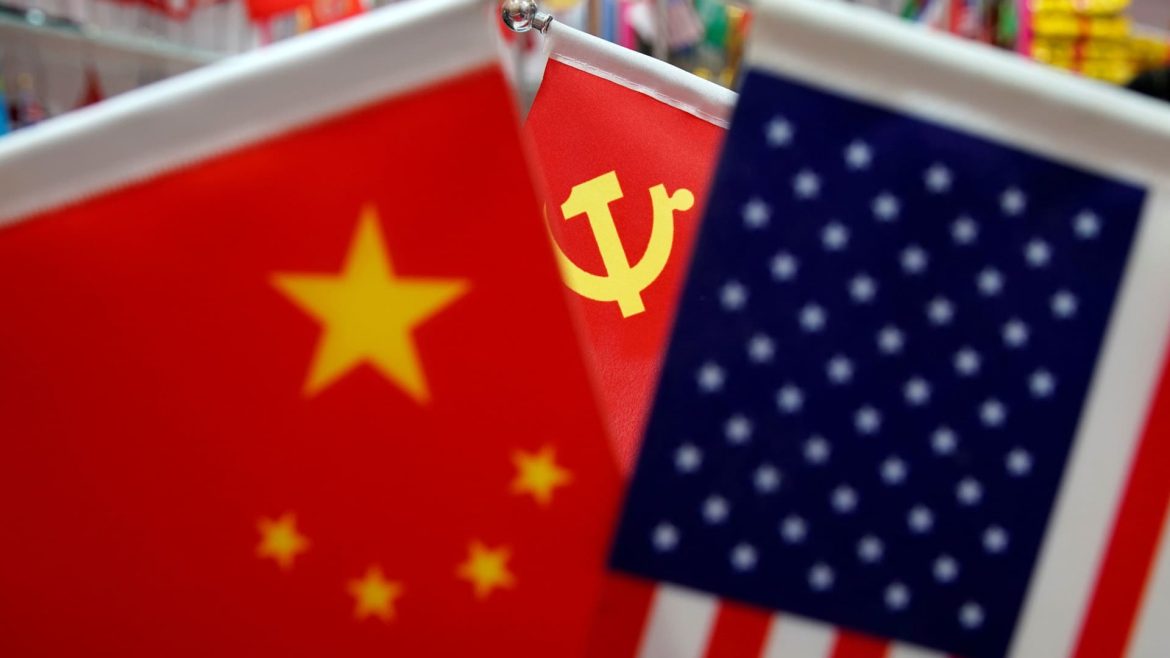Complex Dynamics in US-China Trade Relations: The Trump-Xi Negotiation Saga
The ongoing trade negotiations between the United States, led by former President Donald Trump, and China under President Xi Jinping have become a defining storyline in global economic diplomacy. Over recent weeks and months, this relationship has been marked by sharp accusations, stalled agreements, and an apparent personal fixation by Trump on direct communication with Xi. A close examination of the unfolding events reveals the intricate challenges underpinning these talks, the evolving stances of both nations, and the pivotal role of leadership engagement.
—
Mounting Frustrations and Accusations: A Trade Truce in Tatters
Initially, the two countries reached a tentative trade agreement in Switzerland on May 12, characterized as a truce aimed at rolling back tariffs and setting a 90-day deadline for broader negotiations. However, both sides have since accused each other of breaches:
– Trump’s Perspective: President Trump publicly declared that China had “totally violated” the tariff truce, branding Xi Jinping as “very tough” and “extremely hard to make a deal with.” He asserted a cessation of his earlier leniency, signaling an escalation in rhetoric by rapidly shifting from diplomacy to confrontation. Trump’s claims, often articulated via social media and late-night posts, underscore his impatience with the pace and substance of Chinese compliance.
– China’s Response: Beijing countered by accusing the United States of breaching the agreement terms, reflecting mutual distrust. China’s diplomats and state media framed their tougher stance as a defensive posture against “bullying,” projecting an image of unity and reluctance to concede under pressure. They also emphasized procedural delays, such as the slow issuance of export licenses for critical minerals vital to U.S. industries, as a point of contention.
This tit-for-tat exchange has exacerbated tensions, stalling progress and raising uncertainty about the feasibility of a comprehensive deal.
—
The Personalization of Diplomacy: Trump’s Obsession with Calling Xi
A significant feature of this diplomatic impasse has been Trump’s apparent fixation on direct talks with Xi Jinping:
– Reports characterize the U.S. president as “obsessed” with securing a conversation with Xi, believing that personal engagement is the key to unlocking stalled trade discussions.
– The anticipation of a call has dominated news cycles, with White House officials suggesting that such a conversation is “likely” to occur soon, although no confirmed date has been set.
– This desire reflects Trump’s broader negotiation style, favoring direct leader-to-leader communication to sidestep bureaucratic obstacles and expedite agreements. It also highlights a strategic calculation that only the two presidents, with their political capital and authority, can break the deadlock.
However, this approach risks oversimplifying deeply rooted structural disagreements, as the complexity of trade issues often requires sustained, multi-level engagement beyond headline-grabbing calls.
—
Structural Challenges Behind the Scenes
Beyond the high-profile rhetoric lies a set of substantive, thorny issues:
– Trade Practices and Intellectual Property: The U.S. has repeatedly voiced concerns about Chinese trade practices—such as forced technology transfers, subsidies, and intellectual property theft—that China resists modifying fundamentally.
– Tariff Policies: Disagreements over tariff rollbacks persist, with the Trump administration warning that further increases are on hold pending progress, while China remains cautious about premature concessions.
– Rare Earth and Critical Minerals: The delay in China’s export licenses for minerals essential to U.S. industries reflects a tactical point of pressure and mistrust, complicating negotiations further.
– Diplomatic Ambiguities: Differing expectations and miscommunications have marred fresh talks, with the 90-day window leading to impatience and publicized frustration from both sides.
Together, these challenges underscore that the stalemate cannot be resolved solely through personal rapport or high-level calls but requires addressing systemic policy differences.
—
The Diplomatic Dilemma for Xi Jinping
Chinese President Xi faces a delicate balancing act:
– Maintaining a hard-line stance publicly, positioning China as resilient against perceived U.S. bullying, helps reinforce domestic legitimacy and national pride.
– However, escalating tensions risk economic repercussions, destabilizing global markets, and harming China’s export-dependent economy.
– Analysts suggest that direct negotiations with Trump put Xi in a difficult position, as yielding too much could be seen as capitulation, while standing firm could deepen conflict.
– The question looms whether Xi will “fold” to U.S. demands or “double down” on China’s positions, with recent events suggesting a cautious approach favoring prolonged negotiation without major concessions.
—
The Importance of Leadership Engagement Amidst Uncertainty
Despite stalled talks and public antagonism, there remains cautious optimism that Trump and Xi’s forthcoming communication could reset relations:
– Senior officials emphasize the necessity of leadership intervention to overcome bureaucratic deadlocks.
– Treasury Secretary Scott Bessent and others underscore that a direct call may pave the way for renewed negotiations addressing critical outstanding issues.
– However, any breakthrough depends on mutual willingness to compromise and clear, consistent messaging beyond symbolic gestures or blame games.
—
Conclusion: Navigating a Precarious Path Toward Resolution
The US-China trade stalemate is emblematic of broader geopolitical tensions that transcend mere economics. Trump’s vocal critiques and insistence on direct dialogue with Xi highlight both the urgency and complexity of the talks. While personal diplomacy offers a potential channel for progress, the entrenched disagreements over trade practices, tariffs, and strategic leverage present formidable barriers.
Ultimately, success depends on both leaders’ capacity to transcend political posturing, reconcile conflicting national interests, and develop a sustainable framework for cooperation. Without that, the stalled negotiations risk further erosion, with deep implications for the global economy and international relations. The world watches as Trump and Xi stand at the center of a fraught, high-stakes dance—one that could redefine US-China relations for years to come.





